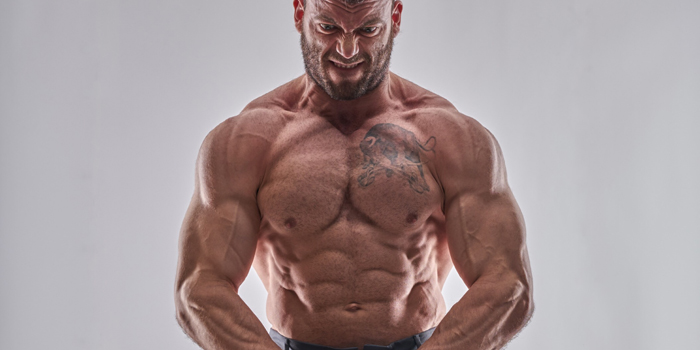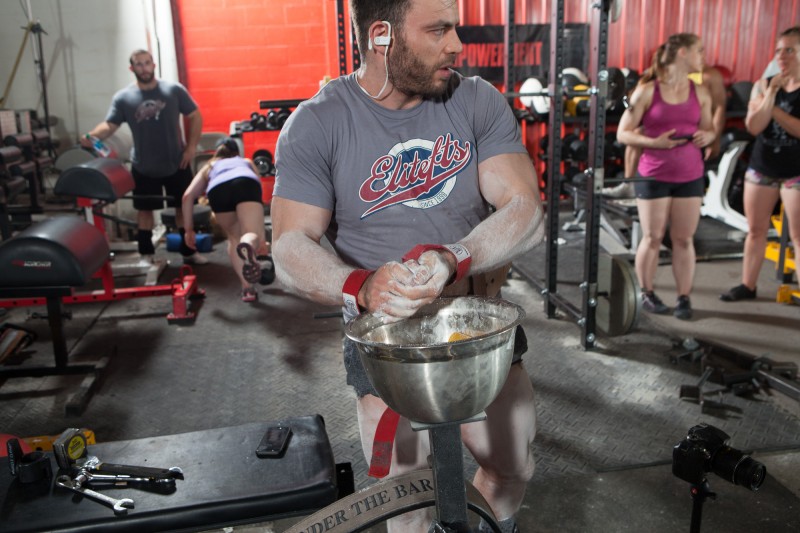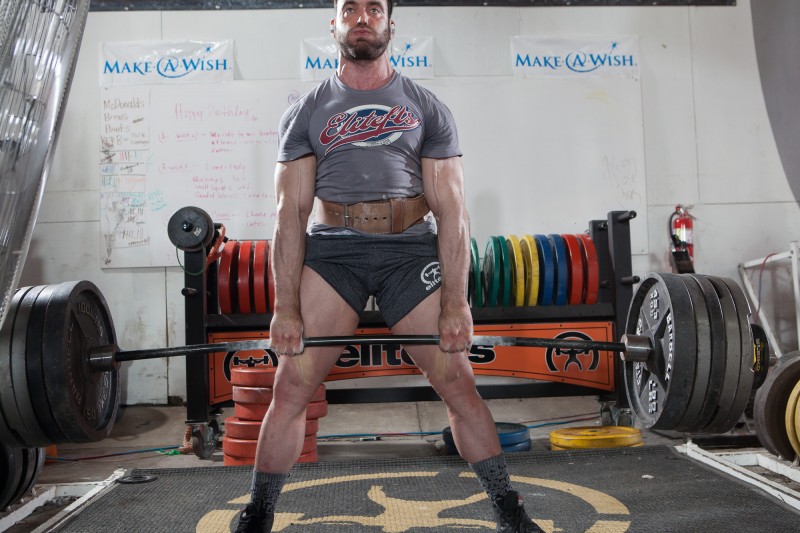

"In the 1950s when I started bodybuilding, most guys believed all you had to do to develop your body was lift weights. They didn’t think what you ate really mattered. Now we all know differently."
Frank Zane
Can you even imagine a bodybuilder who didn’t think diet mattered when building a better physique? Probably not, but many, maybe most, powerlifters think that diet doesn’t matter when building strength. In reality, if you’re eating sub-optimally, you’re also lifting suboptimally. And even if you never want to become an elite powerlifter, you probably want to look good with your shirt off, so diet should matter to you, too.
I’ve been pretty lucky. I have a fast metabolism and don’t have a sweet tooth, so most diet-busters aren’t very appealing to me. And I’ve eaten clean foods for so long that it’s become a habit. But fortunately, even if your metabolism is closer to sloth-paced than cheetah-fast, a few easy dieting strategies can make a big difference in your recovery, in your strength, and—most of all—in how you look. And let’s be real: everybody wanna be a bodybuilder.
Now, keep in mind a couple of things as you read this article. First, nutrition, in my opinion, is not a major component of strength. Will a good plan help? Abso-fucking-lutely. But it’s also not going to add 100 pounds to your squat in a couple of months. Second, everyone is different. If you’ve read Think Strong, you know that this is basically my mantra. If there’s a secret to success in strength and size, it’s figuring out what works for you—not what works for me, or your training partner, or some random Instagram celebrity. This article is designed to help you find what works for you, not teach you how to copy me. This article also doesn’t cover the basics, so if you don’t know the difference between macro- and micronutrients, or have never heard of the glycemic index, you might want to start there.

For most people, choosing the right foods to eat will make a huge impact on your physique—far more than any macro breakdown, meal plan timing, or whatever other complicated strategy Internet gurus rave about.
Here’s the deal: everyone is different. So unless you’re working closely with a qualified coach, you can only figure out what balance of macros works for you by experimenting. Deciding you’re going to rock a keto diet, or carb cycle, or whatever, only works if your body responds well to that strategy. And it’s difficult to maintain rigid macro plans when you go out to eat with friends or are traveling.
Here’s a better idea: don’t eat like an asshole. That just means choosing healthier, less processed foods that are a bit higher in protein. Yeah, everyone is different, and some people can get that Greek God physique while pounding chips and guac at Sunday brunch. Sorry to be the bearer of bad news, but if you were that person, chances are you wouldn’t be reading this article right now. On the other hand, smart food choices make it easy to control your caloric intake. As a bonus, they’re usually lower in the types of fats and additives that can sometimes make you feel sluggish in the gym.
Ever heard of the Pareto principle? It’s a theory that says 80 percent of your gains come from 20 percent of the effort you put in (that’s a very loose translation, but it’s close enough for our purposes). According to the Pareto principle, we should be looking for that 20 percent that produces results, so that we can focus on the things that count and not sweat all the other little stuff that is so often just a distraction. After all, we all have a limited amount of willpower, and when you’re pouring effort into grinding through heavy reps in the gym, it’s fucking hard to force yourself into meal prep for the next day when you get home.
So instead, try looking for easy wins that produce big results. The last section is a great example of an easy win: just make better food choices. Putting some grass-fed beef or jasmine rice into your shopping cart instead of Little Debbie’s requires literally zero effort, but after a couple of months, little changes like that will add up to a tremendous improvement in your physique.
The easiest of easy wins is getting the right nutrition around your workout. You’d be shocked at how many people I talk to who don’t eat or drink anything before or during their training. Now, fasted training does have some benefits if you’re looking to lean out, but you have to implement it extraordinarily carefully to avoid losing massive amounts of strength while training fasted. And, if you’re trying to gain strength and muscle, fasted workouts are a terrible idea.

But even those who do get some nutrition around their training often don’t eat and drink the right stuff, or even the right amount of stuff. Here are my two biggest “musts” to keep in mind:
Nearly all strength athletes would benefit from drinking more water. Even a small amount of dehydration can massively hurt your performance in the gym, and it’s such an easy fix that there’s no excuse for a lack of hydration. I make sure to drink at least a half-gallon of water throughout the day before I train. Depending on your size and schedule, you may need more or less, but you absolutely need to drink something.
Much like with fasting, unless you’re dieting pretty hard, you really need to make sure you get good carbs in before, during, and after your training. You’ll even hear some people talk about carb loading before lifting, and that’s not a bad strategy if you’re trying to gain a lot of size. Regardless, you still need to get simple, easily-digested carbs in during your workout (assuming you’re training with sufficient volume for hypertrophy). It’s too easy to deplete your glycogen stores, especially if you’re training for upwards of two hours at a time, and when that happens, your performance quickly deteriorates. And, of course, you need to get carbs and protein after you train to fuel muscle growth.
Obviously, there are a lot of other strategies you can take to maximize your circa-workout nutrition, but if you’re not already getting enough water and carbs around your workouts, then start—NOW.
Now, outside of circa-workout nutrition, I don’t think carbs are essential. This is a pretty individual thing; personally, I respond extremely well to carbs, so I keep a pretty high carb intake all of the time. But other people don’t do well with high-carb diets. They feel sluggish, gain too much fat, or have digestive issues. Unfortunately, if you’re in the latter group, it can be pretty difficult to avoid carbohydrates entirely, especially because they taste so damn good. On the other hand, if you want to stay lean while gaining size and strength, or to just get lean, carbohydrate manipulation is one of the most straightforward ways to reach your goals.
Carb cutoffs are a very simple way to manipulate your carbs and control your overall caloric intake without having to write down every little thing that you eat. Pick a time—say, after 6 PM—and resolve that after that time, you’re done eating carbs for the day. Just to be clear, the timing of the carbs, in this case, isn’t really the important thing. It’s just simple and convenient to use a limit based on time rather than on amount. This is the same basic principle behind intermittent fasting and carb backloading.
If you find that cutting off carbs at 6 PM isn’t enough to produce the results you want, just set your cutoff one meal earlier. One important thing to note: if you train late in the day, this probably isn’t the best method for you. If you do train late and still want to try carb cutoffs, I’d recommend including carbs only at breakfast and around your workout as described above.
Here are the supplements I take and recommend.
Just a heads up: I’m not recommending that this is what you should eat to get lean. But I get a lot of questions specifically asking what my diet is like, and it can be helpful to look at others as a starting point. Just don’t think of it as a template; what works for me or someone else might not work for you.
I like to carb cycle, so I eat more on my training days and less on my off days. That’s not necessary, but I tend to have good energy levels from setting things up that way.
Meal 1
Meal 2 — Pre-Workout
Following this meal I have pre-workout.
Meal 3 — During Workout
Immediately after training I have a protein shake with sugary cereal.
Meal 4 — Post-Workout
Meal 5
Meal 6
The stats on this day come out to roughly 3,800 calories with 500 grams of carbs, 300 grams of protein (just under 1.5 grams per pound of bodyweight), and 75 grams of fat.
Meal 1
Meal 2
Meal 3
Meal 4
My off days are obviously much more sparse than my training days, but I do fine that way. Off days total around 2,000 calories, 150 grams of carbs, 225 grams of protein (just over one gram per pound of bodyweight) and 60 grams of fat. On both my training and off days, I supplement with EAAs and creatine.
If you only come away from reading this with one thing, I hope it’s this: you don’t have to pick size or strength. You can have both. The secret, if you can even call it that, only requires that you commit working on both your training in the gym and eating outside of it, and have a plan that accounts for both.
Hopefully, this article has also given you some ideas about where to start with that sort of nutrition plan. Admittedly, this article only covers the big-picture stuff. Eating healthful foods, getting in some carbs and water around your workout, and using little tricks to make sure you get enough of what you need and not too much of what you don’t. That’s all well and good, but for many people, the difficulty isn’t in starting a plan, but rather in following through. How, exactly, do you know which foods are the right ones, how many macros you need, and what types and amounts of supplements to take? That’s a different story.
Again, I’m going to defer to my escape clause here: everyone is different, and there’s no one answer that can settle things for every individual in every circumstance. That said, I’m obviously of the mindset that everyone can have size and strength, and leanness. It’s just a matter of Thinking Strong—or, in this case, learning to Think Big, which is the title of one of my ebooks. My goal with Think Big is to teach you everything I know about gaining size and strength at the same time—not turning into a “sloppy” powerlifter or a bodybuilder who can’t bench 315. It covers both training and nutrition, and I’m pretty proud of how it turned out, so if you have questions or have been struggling to reach your own size and strength goals, I hope you check it out.
Originally published in 2017

Ben Pollack is a professional physical culturist. In 2017, he won the world's largest powerlifting meet and became the strongest powerlifter in history in the 198-pound class with a 2039 raw total. He earned his Ph.D. studying the history of strength from the University of Texas in 2018. In 2019, Ben qualified to compete for his pro card in bodybuilding and became an IFBB pro in 2021.